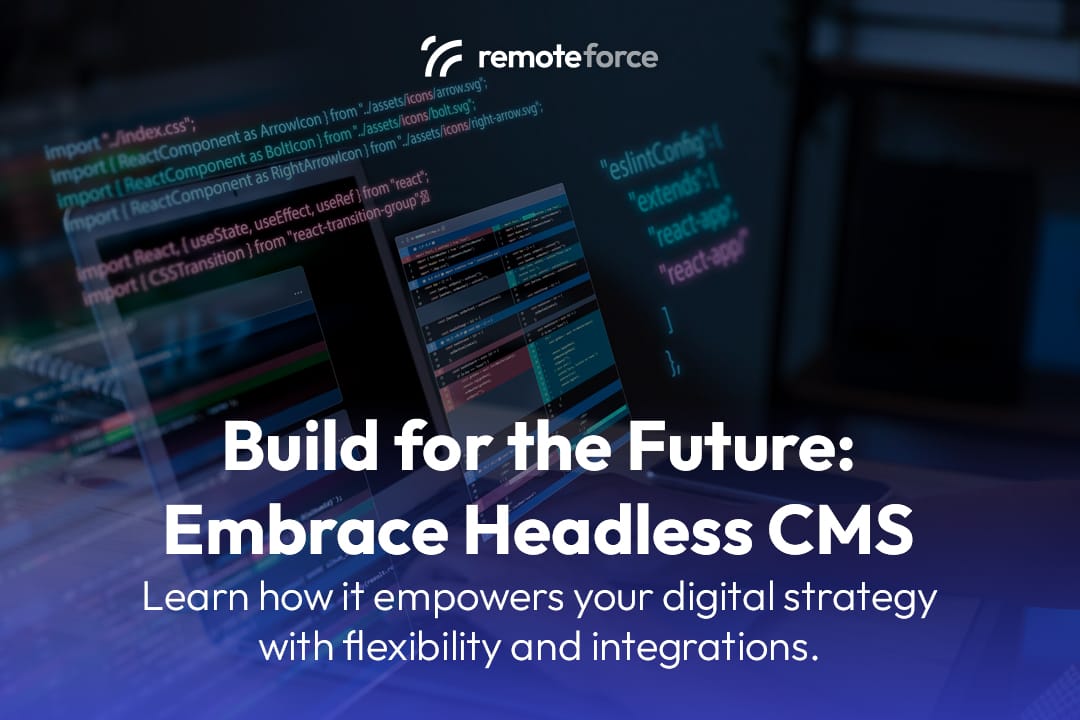In the evolving landscape of digital content, businesses are constantly seeking ways to deliver rich, consistent experiences across a multitude of platforms – from websites and mobile apps to smart devices and IoT (Internet of Things) devices. Traditional Content Management Systems (CMS) often struggle with this multi-channel demand, being primarily designed to serve content to a single website. This is where headless CMS emerges as a transformative solution, revolutionizing how content is managed and delivered.
If you’re wondering what is headless CMS and why it’s the future of web development, you’re exploring a fundamental shift in digital strategy. It decouples the content creation and management “backend” from the content presentation “frontend,” offering unparalleled speed, flexibility, and seamless integrations. Discover how this architectural approach can revolutionize your digital presence. Click to learn more about this powerful paradigm shift!
Table of Contents
ToggleThe Evolution of Content Delivery: From Monolith to Modularity
To understand headless CMS, it helps to first understand its predecessor, the traditional (or “monolithic”) CMS.
- Traditional CMS (Coupled CMS): Think of WordPress, Drupal, or Joomla in their classic forms. They combine both the content management backend (where you create and store content) and the frontend (how the content is displayed on a website) into a single, tightly integrated system. This works well for a single website, but often creates limitations when you need to publish content to multiple, diverse platforms.
The digital world has moved beyond just websites. Companies need to deliver content to:
- Mobile apps (iOS, Android)
- Smartwatches and wearables
- IoT devices (e.g., smart home displays, digital signage)
- Voice assistants (Alexa, Google Assistant)
- And various other digital touchpoints.
A traditional CMS struggles with this fragmentation, often requiring separate content management systems or complex workarounds for each channel. This is the problem headless CMS solves by offering a modular approach.
What Is Headless CMS and Why It’s the Future of Web Development: Key Concepts & Benefits

Let’s dive into the core principles of headless CMS and the significant advantages it offers for modern web development and beyond.
1. Decoupled Architecture: The Core Concept
At its heart, a headless CMS separates the “head” (the frontend, or presentation layer) from the “body” (the backend, or content repository).
- Content Repository: The CMS focuses solely on storing, managing, and delivering content. It acts as a pure content hub, providing content as raw data (e.g., JSON or XML) through APIs (Application Programming Interfaces).
- Frontend Freedom: Developers can then use any frontend technology (e.g., React, Vue, Angular, static site generators like Next.js or Gatsby) to consume this content via the APIs and present it on any digital platform.
- API-First Approach: The primary way content is accessed is through APIs, making it incredibly versatile.
Analogy: Think of a headless CMS as a vending machine for content. You put in a request (via API), and it dispenses the content you need, without dictating how you display it. You could display that content on a web page, a mobile app, or even a smart fridge.
2. Unparalleled Flexibility and Multi-Channel Delivery
This decoupled nature is the source of its immense power.
- “Create Once, Publish Anywhere”: Content is stored centrally and can be seamlessly distributed to any number of digital channels or devices, ensuring consistency and reducing content duplication efforts.
- Technology Agnostic: Developers aren’t locked into a specific programming language or framework for the frontend. They can choose the best-fit technology for each specific “head” (website, app, etc.).
- Future-Proofing: As new digital channels emerge, your content is already structured and accessible via API, making it easy to adapt to future technologies without migrating your entire content base.
- Personalization at Scale: Deliver tailored content experiences across different channels based on user data and preferences, all managed from a single content source.
Expert Insight: “Headless CMS allows businesses to truly embrace omni-channel strategies,” says a leading digital transformation consultant. “It’s no longer about a website, but about a cohesive content experience wherever your customers are.”
3. Superior Performance and Speed
By separating the frontend, headless CMS can lead to significantly faster websites and applications.
- Leaner Frontends: Frontends built with modern frameworks or static site generators often have lighter codebases and fewer server-side dependencies.
- API Efficiency: Content is delivered via APIs, often in lightweight JSON format, which means faster data transfer.
- Scalability: The frontend and backend can be scaled independently, preventing bottlenecks. If your website gets a traffic spike, the content API can handle it without affecting your content management interface, and vice-versa.
- Improved Core Web Vitals: Faster loading times and better interactivity directly contribute to improved Core Web Vitals scores, which are crucial for SEO.
4. Enhanced Security
Decoupling the frontend from the backend inherently improves security.
- Reduced Attack Surface: Since the content management system isn’t directly exposed to the public internet via the frontend, it presents a smaller target for malicious attacks.
- Independent Security: Frontend applications can be built with their own security measures, separate from the CMS, adding layers of protection.
- API Security: Robust API authentication and authorization protocols ensure that only authorized applications can access content.
5. Developer Empowerment and Productivity
Headless CMS empowers developers with greater freedom and efficiency.
- “Best-of-Breed” Stacks: Developers can use their preferred tools and frameworks, leading to more efficient development cycles and higher-quality outputs.
- Parallel Development: Frontend and backend teams can work concurrently without blocking each other, accelerating time to market.
- Reusable Content: Content can be created once by content editors and then seamlessly reused across various digital properties by developers.
- Simpler Integrations: APIs facilitate easier integration with other business tools (e.g., CRM, e-commerce platforms, marketing automation).
Why It’s the Future of Web Development: Beyond Trends

Headless CMS isn’t just a fleeting trend; it represents a fundamental shift in how digital experiences are built and managed. It addresses the growing need for:
- Multi-experience delivery: Serving content to diverse devices and interfaces.
- Performance demands: Users expect instant loading and seamless interactions.
- Developer agility: Empowering developers to build faster and more efficiently.
- Content scalability: Managing vast amounts of content for various channels from a single source.
As the digital landscape continues to fragment and new channels emerge, the ability to manage content centrally and deliver it flexibly will only become more critical. Headless CMS provides the architectural foundation for this future.
Conclusion: Unleash Your Content’s Potential with Headless CMS
What is headless CMS and why it’s the future of web development? It’s a transformative approach that liberates your content from a single presentation layer, empowering you to deliver fast, flexible, and consistent digital experiences across every device and platform. By decoupling content management from content delivery via powerful APIs, headless CMS optimizes performance, enhances security, and provides developers with the ultimate freedom to innovate. It’s not just a technical upgrade; it’s a strategic move that future-proofs your digital presence and positions your business at the forefront of the interconnected web.
If your current CMS is limiting your ability to innovate, scale, or deliver content across multiple channels, exploring a headless CMS solution can unlock significant potential. At RemoteForce, we specialize in comprehensive web and app development services, including expertise in implementing and integrating headless CMS solutions. Our team helps businesses design flexible content architectures, develop lightning-fast frontends, and connect seamlessly with various digital touchpoints, ensuring your content reaches your audience wherever they are. Beyond web and app development, RemoteForce also offers digital marketing, graphic design, secretarial, legal, and accounting services, providing a holistic suite of solutions to empower your entire business.
Ready to future-proof your digital strategy and unlock the full power of your content? Contact RemoteForce today to discuss how headless CMS can transform your web development!




